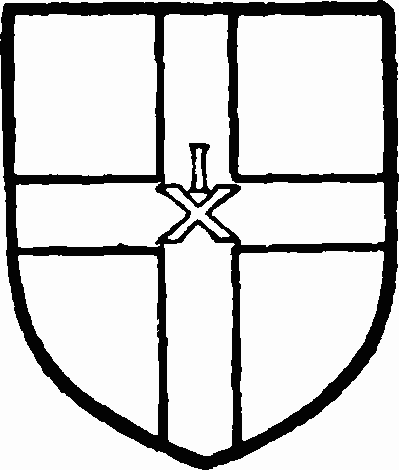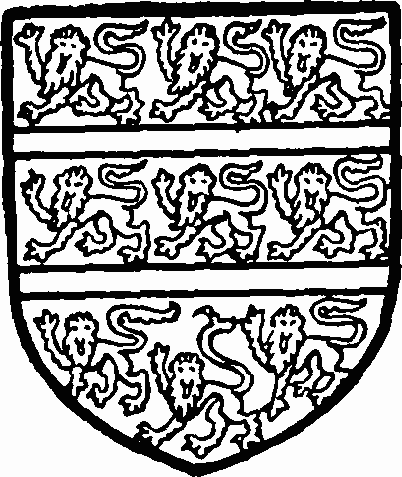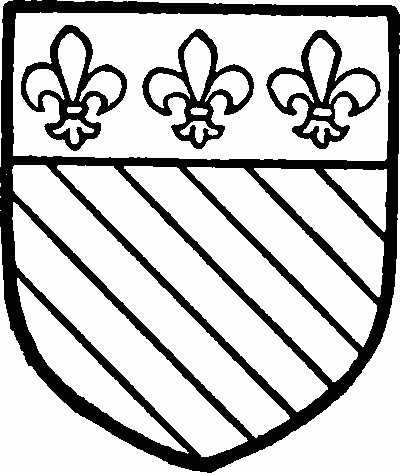A History of the County of Buckingham: Volume 2. Originally published by Victoria County History, London, 1908.
This free content was digitised by double rekeying. All rights reserved.
'Parishes: Halton', in A History of the County of Buckingham: Volume 2, ed. William Page( London, 1908), British History Online https://prod.british-history.ac.uk/vch/bucks/vol2/pp339-341 [accessed 16 January 2025].
'Parishes: Halton', in A History of the County of Buckingham: Volume 2. Edited by William Page( London, 1908), British History Online, accessed January 16, 2025, https://prod.british-history.ac.uk/vch/bucks/vol2/pp339-341.
"Parishes: Halton". A History of the County of Buckingham: Volume 2. Ed. William Page(London, 1908), , British History Online. Web. 16 January 2025. https://prod.british-history.ac.uk/vch/bucks/vol2/pp339-341.
In this section
HALTON
The parish of Halton lies on the northern slopes of the Chiltern Hills, and comprises 1,455¾ acres. (fn. 1) It is well wooded, particularly on the higher and southern parts, about four-sevenths of the total area being woodland. The highest point, about 800 ft. above the Ordnance datum, is in Halton Wood, but in the northern part of the parish the land lies for the most part between 300 ft. and 400 ft. above the Ordnance datum. The Wendover branch of the Grand Junction Canal crosses the parish near the village of Halton, but there are no natural streams of any size in the parish. The most important road passing through the parish is the Upper Icknield Way. The village lies on a cross road running between the Upper and Lower Icknield Ways, joining the latter near Weston Turville village. The nearest station is at Wendover, 2 miles distant, on the Metropolitan Extension Railway. The people are mainly occupied in agriculture, There are gas-works on the Grand Junction Canal. The principal building in the parish is the great modern house of Mr. Alfred de Rothschild.
Manor
The manor of HALTON seems to have been in the possession of the monastery of Christchurch, Canterbury, in the latter part of the 10th century. A tradition names Queen Edith (fn. 2) as the first donor of the manor in 959, but there seems to be no documentary evidence of such a grant. Possibly it came into the hands of the monastery at the same time as Monks Risborough, (fn. 3) which certainly belonged to Christchurch before 995. (fn. 4) There are charters concerning land in Halton of Archbishop Æthelnoth about 1033, (fn. 5) and Archbishop Eadsige between 1045 and 1052. (fn. 6) Both were dated from Monks Risborough and related to the gift of land at Halton by one Tobriges, who gave it after his death to Christchurch. In the time of Edward the Confessor the manor came into the possession of Earl Leofwine, (fn. 7) who probably had no right to it, for the family of Godwine were accused of despoiling the church of its lands. (fn. 8) Archbishop Lanfranc apparently held the manor after the Norman Conquest, (fn. 9) but there was no distinction made at that time between the lands of the archbishop and the lands of the monastery. The restitution of Halton was probably obtained before 1074, and as the king gave it without demanding any price, the claim of the monastery must have been strong. (fn. 10) In the division of the lands between the archbishop and the monks (fn. 11) under Lanfranc, Halton went to the monastery, (fn. 12) and the prior held the manor in chief of the king in frankalmoign until the Dissolution, (fn. 13) when it was worth £21 14s. 4½d. a year. (fn. 14) In 1541 Henry VIII granted it to the newly-formed Chapter of Canterbury (fn. 15) in frankalmoign, but four years later they were forced to make an exchange of lands with the king, (fn. 16) and it was sold to Henry Bradshawe (fn. 17) to hold as one-fortieth of a knight's fee for 800 marks. He probably belonged to the family of Bradshawe of Wendover. There is a brass in Wendover Church to William Bradshawe, who died in 1537, giving a list of his nine children and twenty-three grandchildren, and it is possible that Henry Bradshawe was his eldest son. Henry was a member of the Inner Temple, and served as reader, treasurer, and governor of the society. (fn. 18) He became solicitor-general in 1540, (fn. 19) attorney-general five years later, (fn. 20) and in 1552 Chief Baron of the Exchequer. (fn. 21) Very little is known about him beyond the outlines of his career. He was Chief Baron till the end of the reign of Edward VI, and witnessed that king's will in favour of Lady Jane Grey. He died a few weeks after the accession of Mary in 1553, and so escaped removal from his office or further disgrace. According to his will the manor passed to his widow Joan during the minority of his heir, (fn. 22) and she was in seisin in 1562. (fn. 23) His heir was his son Benedict, (fn. 24) who was a minor at the time of his father's death. He only survived him a few months, (fn. 25) and the reversion of the manor passed to his two sisters, Christiane the wife of Thomas Winchcombe, and Bridget the wife of Henry White. Christiane died in 1557, (fn. 26) and her husband came into possession of her moiety of the manor and held it till his death in 1574, (fn. 27) when her son Benedict Winchcombe (fn. 28) succeeded him. Benedict Winchcombe had however quitclaimed the manor in his father's lifetime (fn. 29) to his aunt Bridget, Benedict Bradshawe's other co-heiress, and her second husband Thomas son of Richard Fermor, a merchant of the Staple of Calais, who settled at Easton Neston (Northants). (fn. 30) Thomas, though a younger son, inherited the estate of his uncle at Summertown and Tusmore, Oxon, besides holding the greater part of the Bradshawe estates. (fn. 31) He represented the borough of Wycombe in 1562–3, (fn. 32) but does not seem to have been a member in later Parliaments. He died before his wife, (fn. 33) and at her death the manor of Halton passed to their son and heir Richard, (fn. 34) a child of three. After attaining his majority, he settled the manor in 1598 upon Sir Francis Wolley and his wife Mary, (fn. 35) with contingent remainder to Lady Elizabeth Egerton, the mother of Sir Francis. On the death of Sir Francis in 1601 (fn. 36) Halton reverted to Sir Richard Fermor, who was holding it in 1641. (fn. 37) Henry Fermor, presumably the son and heir of Sir Richard, was a papist, (fn. 38) and had to compound in 1647 for £556 for his reversionary estate in Halton. A settlement was made of the manor in 1656 (fn. 39) between Henry Fermor and a younger Richard, presumably his son and heir, and in 1671 Henry Fermor bought from Lord Hawley and other trustees for the sale of rents belonging to the Crown the fee-farm rent (fn. 40) of 40s. 7½d. due from the manor of Halton. Richard Fermor succeeded Henry before 1678, in which year he leased the manor for ninety-nine years, (fn. 41) probably in mortgage, to Sir Thomas Crewe, Edmund Verney, Ralph Sheldon, Basil Drake, and Ambrose Holbech, for whom presumably the last-named acted, as his name appears in a settlement of the manor made in 1684, (fn. 42) and he presented to the rectory, which was leased at the same time. (fn. 43)

Christchurch, Canterbury. Azure a cross argent with the sacred monogram [I X] sable upon the cross.

Bradshawe. Azure two bars gules between nine leopards or.

Fermor. Bendy of eight pieces or and gules and a chief argent with three fleurs de lis azure therein.
Halton passed to Henry Fermor before 1684, (fn. 44) and to his son James before 1719. (fn. 45) In the next year James Fermor (fn. 46) sold the manor with its appurtenances and a water-mill to Francis Dashwood, afterwards Sir Francis Dashwood, bart., whose descendants held it for more than a hundred years, (fn. 47) and his grandson, Sir John Dashwood King, lived at Halton Manor House, (fn. 48) but after his death it was unoccupied for some time. The manor was sold either by his executors or by his son George Dashwood in 1851 (fn. 49) to Baron Lionel de Rothschild, and Mr. Alfred de Rothschild is the present lord of the manor.
The prior and convent of Christchurch obtained a grant of free warren in their demesne lands in Halton from King Edward II in 1316, (fn. 50) and the grant was afterwards confirmed by Edward III (fn. 51) and Henry VI. (fn. 52) In the latter charter, reference is made to a charter of Henry II, granting warren in the lands of the church of Holy Trinity, Canterbury, in Buckinghamshire and Oxfordshire, (fn. 53) so that the monks of Christchurch had presumably exercised the privilege long before the grant of Edward II. The prior also claimed to hold the view of frankpledge in Halton, (fn. 54) and to have waifs and the chattels of felons and fugitives, and was quit of suit to the shire and hundred courts for himself and his men. (fn. 55) When his privileges were challenged by Edward I he quoted a charter of William the Conqueror (fn. 56) to Archbishop Anselm with a long list of ancient privileges. He also claimed to have his own gallows, tumbril, and pillory, but it was said that neither tumbril or pillory existed at Halton. (fn. 57) No privileges are mentioned in the grant to Henry Bradshawe, nor in documents relating to the Fermors. In 1786, however, George Dashwood claimed certain general privileges in the manor, (fn. 58) and presumably both the Fermors and Dashwoods held the view of frankpledge.
A piece of land in Halton appears to have been parcel of the honour of Gloucester in the 14th and 15th centuries. Presumably it had formed part of the lands of Walter Giffard, Earl of Buckingham, (fn. 59) many of which descended to the Earls of Gloucester, and from them to the Earls of Stafford, who were overlords of a knight's fee, or part of a fee, in Halton in the 14th century. In 1386 (fn. 60) John Hampden was the tenant of this land, and may presumably be identified with the John Hampden who inherited Upton Manor in Great Kimble in 1377. (fn. 61) His heir is mentioned in 1460, (fn. 62) but this land in Halton is not again referred to.
Church
The church of ST. MICHAEL is a completely modern structure consisting of a shallow chancel, a nave of four bays with north and south aisles, and a western tower. It was built in 1813 and is faced with Heath stone, and designed in a poor adaptation of 13th-century style. The nave is separated from the aisles by arcades of four bays with pointed arches and columns with foliate capitals. The windows are either lancets or have simple tracery. The tower is a small one of three stages with an embattled parapet, and contains a stair to a small gallery, projected through the tower arch, which serves as an organ loft. The seating, fittings, woodwork, &c., are all modern, except the font, which is of late 18th-century date. It is constructed of white marble inlaid with coloured marbles, and has a small square bowl, ornamented with grotesques, which is supported upon a twisted stem.
The only trace remaining of the old church, which occupied about the same site, is some stone curbing laid down to the east of the present church, marking the lines of the old chancel.
In the sanctuary, affixed to the north wall, is a brass, removed from the old church, with the figures of a man in armour, his wife, four sons, and four daughters. The inscription runs: 'Orate p[ro] aīab[us] henrici Bradschawe Armig'i capit[a]lis baron sc[ac]c[ar]ii d[omi]ni Regis & Johane uxoris eius qui quidem henric' obiit xxvij° die julie a° d[omi]ni mvciij A° Regni vii° Reg. E viti cui' a[nima]e p[ro]piciet de[us].' On another plate is a shield of arms: Two bends and a chief with a fleur de lis between two roses dimidiated, quartering quarterly I and 4, Party bendwise a crosslet, 2 and 3, On a cross five lozenges, the whole impaling a trellis. This is perhaps a memorial of a Fermor marriage.
The tower contains four bells, cast by John Briant of Hertford in 1814.
The church plate comprises a covered cup of 1569, the foot of which was remade in the 17th century; an unmarked standing paten and a salver of 18th-century date and a ewer of 1830.
The first book of the registers contains baptisms from 1663 to 1728, marriages from 1607 to 1724, with a gap between 1639 and 1654, and burials from 1606 to 1773, with notes of affidavits of burials in woollen from 1678. The second book contains baptisms from 1729 to 1757, marriages from 1744 to 1757 with a gap between 1751 and 1754, after which date the entries are in the form of the 1754 printed book, and burials between 1729 to 1770. The third book contains marriages with banns between 1760 and 1812; and the fourth baptisms from 1763, and burials from 1783, both running to 1812.
Advowson
The church of Halton, like that of Monks Risborough, belonged to the deanery of Risborough, in the exempt jurisdiction of the Archbishop of Canterbury. (fn. 63) The exempt jurisdiction was abolished in 1841, (fn. 64) and Halton, like Monks Risborough, is now in the diocese of Oxford. The church of Halton presumably came into the possession of the monastery of Christchurch, Canterbury, as early as the manor, but it is not definitely mentioned till the 13th century. After the separation of the monastic and episcopal possessions it passed to the archbishops, (fn. 65) who held the advowson of the church until the reign of Henry VIII. (fn. 66) Archbishop Cranmer surrendered it (fn. 67) with the ratification of the Dean and Chapter of Canterbury to the king, and Henry VIII granted it in 1565–6 (fn. 68) to Sir Edward North and his wife Alice. Edward VI appears to have made reparation for the loss of the advowson of Halton Rectory to the Archbishop of Canterbury, (fn. 69) but it was itself never recovered. Sir Edward North sold it in 1548–9 (fn. 70) to Henry Bradshawe, and from him it passed to the Fermors. In 1667 the advowson was quitclaimed by Henry and Richard Fermor to Henry and Francis Harris and the heirs of Henry, (fn. 71) and the latter probably presented in 1678. John Harris was the new rector, and in a list of rectors (fn. 72) he is said to have been presented by Francis Harris, and admitted by Archbishop Sancroft, but owing presumably to some confusion the archbishop is said elsewhere to have collated to the rectory himself in that year. (fn. 73) The right to present to the rectory passed for the next time to William Wilmer, who exercised his right in 1685. (fn. 74) Some years previously, however, in 1678, (fn. 75) Richard Fermor had granted a lease of the advowson for 99 years, and the lessee, Ambrose Holbech, presented to the rectory twice in 1691. (fn. 76) The Fermors recovered possession of the advowson before 1719, (fn. 77) and it was sold with the manor to Sir Francis Dashwood, (fn. 78) and has since then been in the possession of the lord of the manor, (fn. 79) Mr. Alfred de Rothschild being the present patron of the living. The rectors of Halton do not seem to have been in any way distinguished like many of the clergy in Buckinghamshire. Two of them indeed seem to have had an unenviable reputation. In 1318 (fn. 80) Philip de Walton was accused with several others of theft at Hulcott, and in the 17th century John Latimer obtained a grant of pardon (fn. 81) for the manslaughter of 'Christopher Harper, his servant, who was hurt through his passionate and indiscreet correction, but lived 9 months after.'
Charities
In 1553, as appears from a Decree of Commissioners for Charitable Uses, 1630, Mrs. Alix Bradshawe in her will gave out of her lands in Edlesborough and Dagnall 20s. a year, of which 6s. 8d. was for the poor of Halton. See under Wendover. The annuity is paid by Earl Brownlow.
The poor of this parish are entitled to a moiety of the income of Mrs. Joan Pradshaw's Charity in Wendover. In 1906 the sum of £16 12s. 6d. was received as the half share of the George Inn, Wendover.
Widow Turpin's Charity consisted of a rent-charge of 18s. payable out of a close called Turpin's Spring, in this parish, which is distributed in bread at the church porch on St. Thomas's Day. An annuity of £1 is paid by Mr. A. C. de Rothschild.
Edmund Lambert, M.D., by will dated 1st October 1866, administration of which was granted 5 February 1878, left a sum of ordinary stock of the Great Western Railway, now represented by £100 like stock, the dividends to be applied for the benefit of the poor. The stock, together with a sum of 11s. 4d. consols, is held by the Official Trustees, producing in 1907 £5 7s. 6d.
The incomes of these charities are administered together. In 1906 £18 was distributed in money, £5 in blankets, and £1 in bread.
